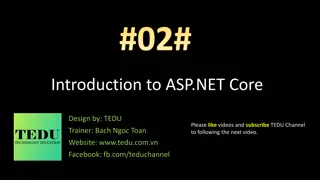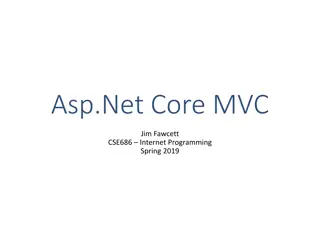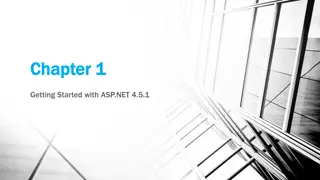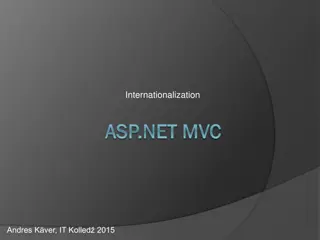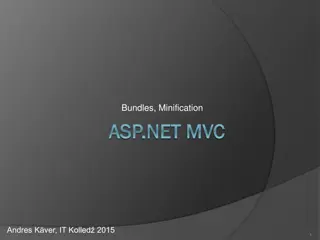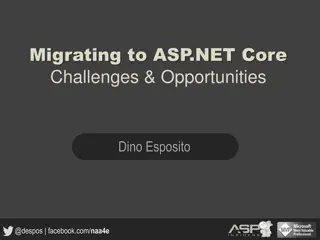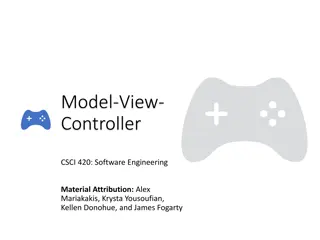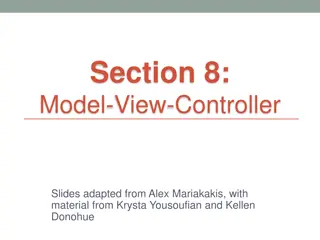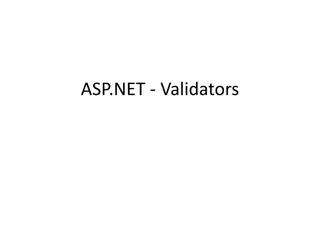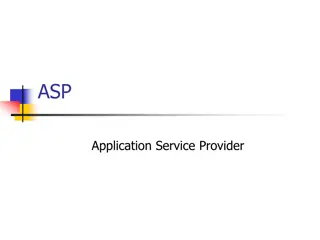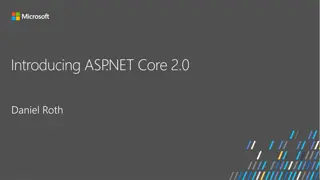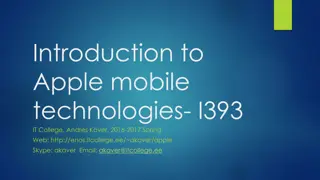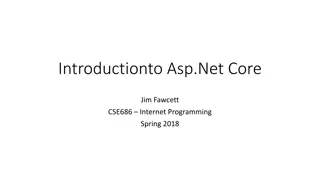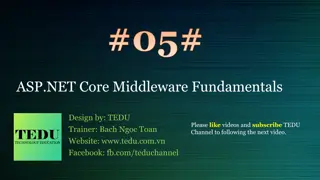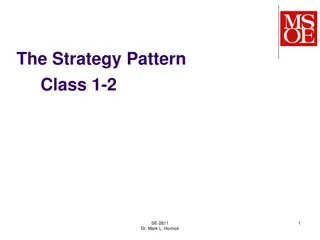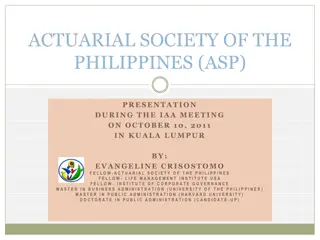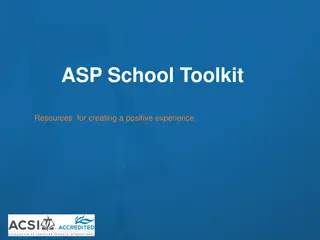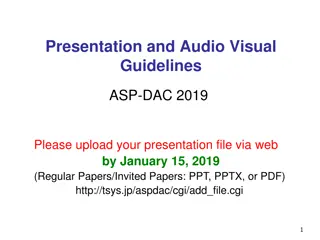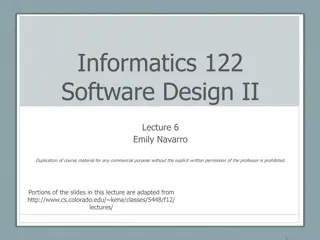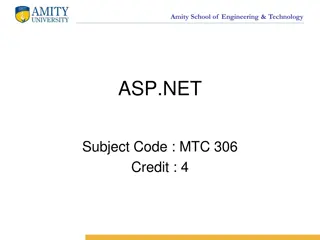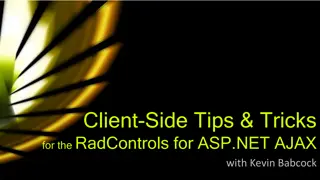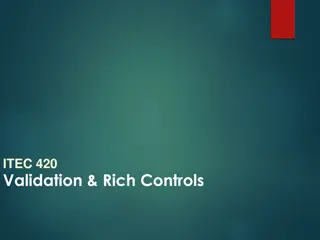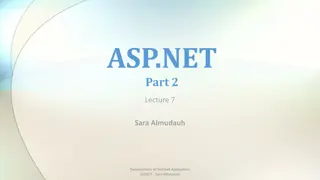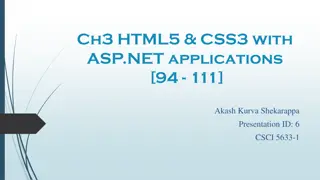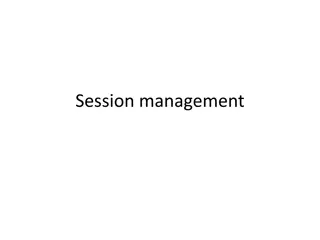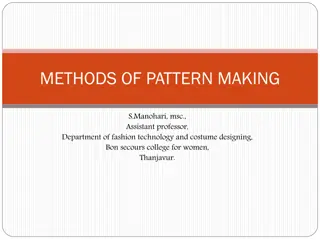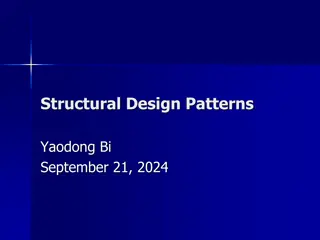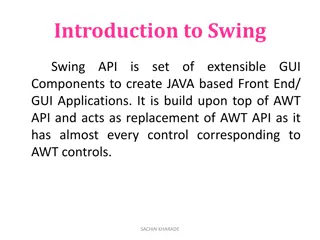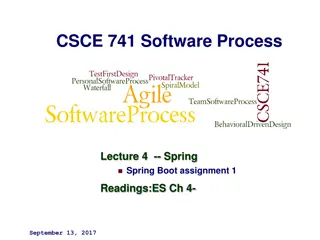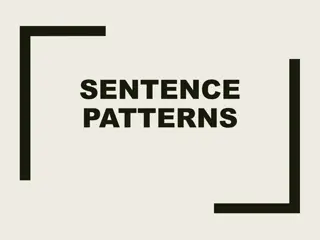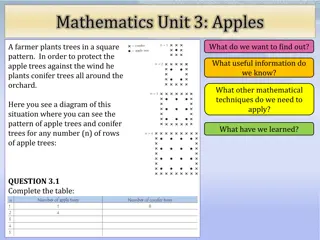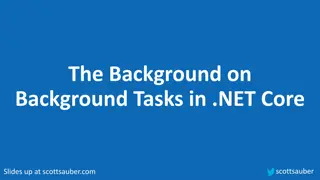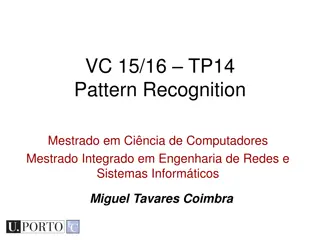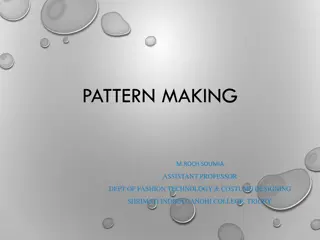Understand MVC Design Pattern in ASP.NET Core
ASP.NET Core web applications follow the MVC design pattern, which emphasizes separation of concerns, with distinct responsibilities for the Model, View, and Controller components. This pattern ensures maintainability, testability, and extensibility of applications. Learn how each component functions and contributes to the overall application architecture.
Download Presentation

Please find below an Image/Link to download the presentation.
The content on the website is provided AS IS for your information and personal use only. It may not be sold, licensed, or shared on other websites without obtaining consent from the author. Download presentation by click this link. If you encounter any issues during the download, it is possible that the publisher has removed the file from their server.
E N D
Presentation Transcript
#12# MVC Design Pattern in ASP.NET Core Design by: TEDU Please like videos and subscribe TEDU Channel to following the next video. Trainer: Bach Ngoc Toan Website: www.tedu.com.vn Facebook: fb.com/teduchannel
Overview ASP.NET Core web apps are based on the popular MVC Design pattern. MVC Pattern stands for Model-View-Controller Pattern. In this Tutorial, we learn what is MVC and in the subsequent tutorial, we will see how to use MVC Design pattern in ASP.NET Core.
Separation of concerns The Separation of concerns philosophy states that each component of the application is responsible for only one thing. They should do not depend upon any other component as much as possible. In other words, the components should be loosely coupled with other. The application built using such a concept is easily testable, maintainable and extensible. The MVC Pattern follows the separation of concerns philosophy.
Model The model represents the data that needs to be shown to the user and some associated logic. It is an object or just another c# class with properties and methods. The model does not and should not depend on Controller or View. The only responsibility of the model is to hold the data. The model class is ideally reusable.
View The view is a visual representation of the model. It is the responsibility of the View is to take the model from the controller, render and present it to the user. A View has following responsibilities Responsible for interacting with the User Render the model to the user Accept User interaction and pass it to controller Consists of Standard HTML Pages / Javascript and CSS Should be able to Render JSon, XML and custom return types
Controller The Controller receives the request. It then builds the model and selects the view to display it. It sits between View and the model. You can think of it as a glue which joins Model to the View. The Controller should not become a dumping ground for your code. The Controller has following responsibilities Process incoming requests from the user. The controller then passes the request to appropriate Service layer gets the model. Pass the model to view for rendering. Passes the validations and errors back to View if any. The controller never accesses the data layer.


